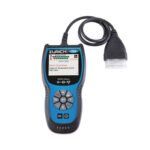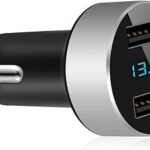For automotive technicians and car enthusiasts alike, diagnosing vehicle issues efficiently is crucial. The Cheap Obd2 Breakout Box emerges as an indispensable tool in this process, offering a cost-effective solution for accessing and analyzing your car’s On-Board Diagnostics II (OBD2) system. This essential device simplifies complex diagnostics, allowing for quick and safe monitoring of your vehicle’s communication protocols, power, and ground signals.
Why Choose a Cheap OBD2 Breakout Box?
While professional diagnostic equipment can be expensive, a cheap OBD2 breakout box provides a budget-friendly entry point into advanced car diagnostics. It’s perfect for DIY mechanics, hobbyists, and even professional technicians looking for a portable and accessible solution. Don’t let the term “cheap” mislead you – these breakout boxes are designed to offer reliable functionality and safety without breaking the bank.
Key Features of an Affordable OBD2 Breakout Box
A quality cheap OBD2 breakout box, like the AUTOOL OBD2 Protocol Detector Basic Version, is packed with features that make diagnostic work easier and more effective:
Universal OBD2 Compatibility
Equipped with a standard 16-pin OBD2 interface, it ensures compatibility with virtually all modern vehicles. This wide-ranging application makes it a versatile tool for any garage, whether you’re working on personal vehicles or a diverse range of makes and models professionally.
Direct Diagnostic Interface
The inclusion of a diagnostic interface means seamless connection to your car’s OBD2 port. This direct link simplifies setup and allows for immediate access to the vehicle’s diagnostic data, streamlining the troubleshooting process.
Durable and Flexible Cable
Look for models that feature cables made from robust materials like TPU. This ensures high elasticity and flexibility, crucial for withstanding the rigors of regular use in an automotive environment, while maintaining strong signal integrity.
Full Analog OBD2 Connector
A full analog OBD2 16-pin connector is essential for comprehensive testing. It allows for direct connection to multimeters and oscilloscopes, enabling in-depth analysis of electrical signals and protocol behavior, going beyond basic code reading.
External Power Supply Capability
Certain models offer connectivity to an external 8~30V power supply. This feature is particularly useful for tasks like ECU power supply during battery replacements, preventing data loss and ensuring smooth transitions.
Safety and Reliability
Despite being a cheap OBD2 breakout box, safety should never be compromised. Reputable brands like AUTOOL prioritize user safety with designs that minimize the risk of damaging the vehicle’s communication system. It’s always advisable to heed warm tips provided by manufacturers regarding safe usage to prevent any unintended issues.
Enhance Your Diagnostic Capabilities Without Overspending
Investing in a cheap OBD2 breakout box is a smart move for anyone involved in vehicle maintenance and repair. It provides a practical, affordable, and effective way to delve into OBD2 diagnostics, offering functionalities previously only accessible with more expensive equipment. From reading basic codes to analyzing complex communication protocols, this tool empowers you to understand your vehicle’s health comprehensively.
For those seeking an economical yet powerful diagnostic solution, the cheap OBD2 breakout box stands out as an invaluable asset. It bridges the gap between cost and capability, making advanced car diagnostics accessible to a wider audience.

